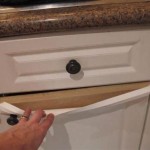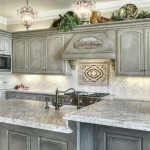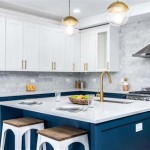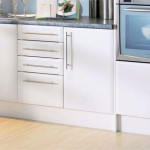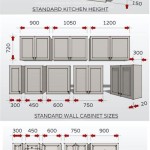What Color White For Kitchen Walls: A Comprehensive Guide
Selecting the right white paint for kitchen walls can be surprisingly complex. While white might seem like a straightforward choice, the reality is that there exists a vast spectrum of white shades, each with its own undertones and characteristics. These subtle variations can significantly impact the overall look and feel of the kitchen, influencing the perceived size, light levels, and even the warmth or coolness of the space. Therefore, understanding the nuances of white paint is crucial to achieving the desired aesthetic.
The kitchen is often the heart of the home, a space where functionality and aesthetics must coexist harmoniously. The color of the kitchen walls plays a significant role in establishing the overall ambiance. White, in its versatility, offers a clean, bright, and adaptable canvas that complements various design styles, from modern minimalist to rustic farmhouse. However, the wrong white can appear sterile, dull, or clash with existing cabinetry, countertops, and appliances. This guide aims to provide a thorough understanding of how to choose the right white paint for kitchen walls, taking into consideration factors such as undertones, lighting, and coordinating elements within the kitchen.
Understanding Undertones in White Paint
The key to selecting the perfect white paint lies in recognizing and understanding undertones. While a paint might appear purely white in isolation, it invariably possesses subtle hints of other colors that influence its overall appearance. These undertones can be warm (yellow, red, orange) or cool (blue, green, violet), and they become more apparent when the paint is applied to a larger surface and viewed under different lighting conditions.
Warm whites, with their yellow, red, or orange undertones, tend to create a cozy and inviting atmosphere. They work well in kitchens that lack natural light, as they can add warmth and prevent the space from feeling cold or sterile. Examples of warm whites include ivory, cream, and antique white. These shades often complement natural wood tones and warm-colored countertops, such as granite or butcher block.
Cool whites, on the other hand, possess blue, green, or violet undertones. They tend to create a clean, crisp, and modern feel. Cool whites are often a good choice for kitchens with abundant natural light, as they can help to balance the brightness and prevent the space from feeling too stark. Examples of cool whites include bright white, snow white, and some shades of off-white with a hint of gray. These shades often pair well with stainless steel appliances, cool-toned countertops like quartz or marble, and modern cabinetry.
Neutral whites represent a middle ground, lacking strong warm or cool undertones. These whites are versatile and can work well in a variety of kitchen styles. They are often a safe choice when unsure which direction to take, as they are less likely to clash with existing elements in the kitchen. Examples of neutral whites include some shades of off-white, eggshell, and white with a very subtle hint of gray or beige.
It is essential to test paint samples in the actual kitchen before committing to a particular shade. Paint a large swatch on the wall and observe it under different lighting conditions throughout the day. Pay attention to how the undertones appear and how the paint interacts with other colors and materials in the kitchen. This step is crucial to avoid unexpected results and ensure that the chosen white paint complements the overall design scheme.
Factors Influencing White Paint Selection
Several factors should be considered when selecting white paint for kitchen walls. These factors include the amount of natural light, the existing color palette of the kitchen, the desired style of the space, and the type of finish.
Natural Light: The amount of natural light a kitchen receives significantly impacts how white paint appears. In kitchens with ample natural light, a cool white can help to balance the brightness and create a crisp, clean look. In kitchens with limited natural light, a warm white can add warmth and prevent the space from feeling cold or sterile. If the kitchen receives a mix of natural and artificial light, a neutral white might be the most versatile choice.
Existing Color Palette: The existing colors in the kitchen, including cabinetry, countertops, flooring, and appliances, should also be considered. The white paint should complement these elements, creating a cohesive and harmonious look. For example, if the kitchen features warm-toned wood cabinets, a warm white paint can enhance the natural tones and create a cozy feel. If the kitchen features cool-toned countertops, a cool white paint can complement the sleek, modern aesthetic.
Desired Style: The desired style of the kitchen also influences the choice of white paint. For a modern minimalist kitchen, a cool, bright white can create a clean and contemporary look. For a rustic farmhouse kitchen, a warm, creamy white can enhance the cozy and inviting atmosphere. For a traditional kitchen, a neutral white can provide a versatile backdrop that complements a variety of design elements.
Paint Finish: The finish of the paint also plays a role in the overall appearance and functionality of the kitchen walls. Different finishes offer different levels of sheen and durability. Flat or matte finishes have the least amount of sheen and are often used in low-traffic areas. Eggshell finishes have a slight sheen and are more durable than flat finishes. Satin finishes have a medium sheen and are easy to clean, making them a good choice for kitchens. Semi-gloss finishes have a high sheen and are very durable and easy to clean, making them ideal for areas that are prone to moisture and grease, such as backsplashes. High-gloss finishes have the highest sheen and are very durable, but they can also highlight imperfections in the walls. For kitchen walls, a satin or semi-gloss finish is generally recommended due to its durability and ease of cleaning.
Specific White Paint Options and Their Applications
Given the complexities of undertones and external factors, making recommendations on specific white paint colors requires acknowledgement of their individual characteristics and appropriate applications within a kitchen setting.
Benjamin Moore's "Simply White" (OC-117) is often cited as a versatile and popular choice due to its understated warmth and neutrality. While technically a warm white, its warmth is subtle enough to work well in a variety of lighting conditions. It tends to complement both natural wood tones and cooler-toned accents, making it a relatively safe and adaptable choice for many kitchens.
Sherwin-Williams' "Pure White" (SW 7005) is a slightly cooler white than Simply White, leaning towards a brighter and cleaner aesthetic. It works exceptionally well in kitchens with ample natural light, enhancing the sense of space and airiness. It pairs particularly well with modern cabinetry, stainless steel appliances, and cool-toned countertops such as marble or quartz.
Farrow & Ball's "Pointing" (No. 2003) is another warm white option, known for its creamy and inviting character. This shade works remarkably well in kitchens with more traditional designs or those seeking a rustic aesthetic. It complements natural wood finishes beautifully and provides a sense of warmth and comfort. The higher pigment levels of Farrow & Ball paints contribute to a richer color payoff.
Benjamin Moore's "White Dove" (OC-17) is a soft, off-white with a slightly gray undertone. The subtle gray undertone gives this color depth and sophistication that many pure whites lack. It's a versatile choice that works well in a variety of lighting conditions and with different design styles. It tends to soften the effect of bright natural light, making it suitable for kitchens with large windows.
These are just a few examples, and the best choice will ultimately depend on the specific characteristics of the kitchen and the desired aesthetic. Consulting with a paint professional or interior designer can provide personalized recommendations based on the unique circumstances of the space.
In addition to considering these factors, it is also important to properly prepare the walls before painting. Clean the walls thoroughly to remove any dirt, grease, or grime. Repair any cracks or holes with spackle or joint compound. Prime the walls with a high-quality primer to ensure good adhesion and a uniform finish. This will help to create a smooth and durable surface for the new white paint.
The selection of the right white paint color for kitchen walls is a process that requires careful consideration of various factors. By understanding undertones, evaluating lighting conditions, considering existing color palettes, and choosing the appropriate finish, it is possible to create a kitchen that is both beautiful and functional. Investing time in research and testing paint samples will significantly increase the likelihood of achieving the desired aesthetic and creating a space that reflects personal style and enhances the overall home environment.

The Best Paint Colors For Kitchens With White Cabinets Zhush

Best Paint Colors For Kitchens With White Cabinets

Our Favorite White Kitchen Cabinet Paint Colors Christopher Scott Cabinetry

The Best Paint Colors For Kitchens With White Cabinets Zhush

Wall Colors That Go Perfectly With White Kitchen Cabinets

The Best Paint Colors For Kitchens With White Cabinets Zhush

25 Popular Kitchen Paint Colors With White Cabinets For 2024

25 Popular Kitchen Paint Colors With White Cabinets For 2024

10 Kitchen Wall Colors To Elevate Your Culinary Space

6 White Paint Colors Perfect For Kitchens Kitchen Best
Related Posts

